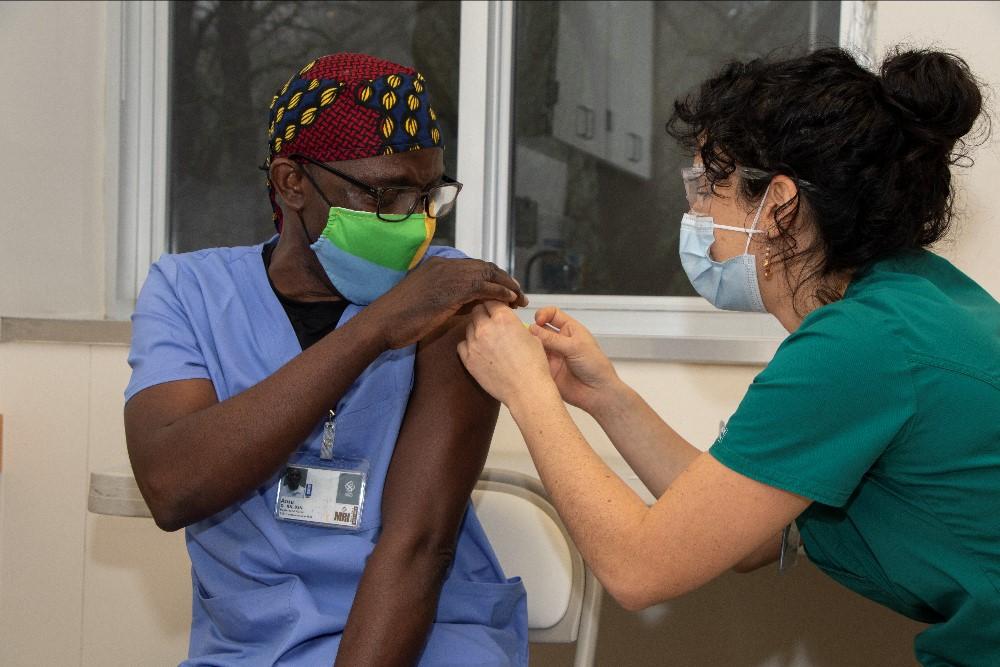
The Oregon Health Authority is no longer requiring health care workers, patients and visitors to wear masks while inside hospitals and clinics. But masks won’t completely disappear from health care settings and could again be widely required.
The health authority dropped the masking requirement beginning Monday, April 3, in response to the declining number of people hospitalized or testing positive for respiratory infections, including COVID-19.
While masking requirements that once marked daily life during the pandemic have relaxed elsewhere, the health authority has kept them in effect since August 2021 for hospitals, dental offices, long-term care facilities and other medical settings.
A news release from the health authority announcing the end of the mandate noted that health care providers may still require masks. The Lund Report reached out to Oregon’s major health systems to see what they would continue to require.
Of those that responded, some will have more relaxed masking requirements. But patients and visitors can expect to mask up in more sensitive areas. More widespread masking could return along with another wave of respiratory infections.
Different health systems, different requirements
Providence Health & Services, which has more than 90 clinics and eight hospitals in Oregon, will still require providers and other staff to wear a mask while providing direct patient care, according to an email from health system spokesman Gary Walker. Providers and caregivers will also be required to wear masks when entering a patient’s room, as well as while providing treatment or transportation.
However, Providence is making masking voluntary for providers and caregivers at nurses’ stations and when not transporting patients in hallways, as well as in breakrooms, lobbies and conference rooms. They are required to wear masks if requested by patients. Providence is also recommending caregivers wear masks while checking in patients.
Oregon Health & Science University is still requiring staff to wear masks in virtually all settings, according to its website. It’s also requiring visitors and patients to wear masks in emergency rooms and waiting areas, as well as cancer units and other sensitive areas.
Kaiser Permanente, which operates two hospitals and 36 medical offices in Oregon and southwest Washington, is no longer requiring masking in its medical and dental offices, with some exceptions for areas where patients receive oncology treatments, infusions or dialysis, according to an emailed statement from spokesperson Michael Foley.
“We will continue to require that everyone wear masks in our hospitals, providing additional protection for our patients, staff, and the community,” reads the statement.
Both Legacy Health and PeaceHealth Oregon are making masks optional but requiring them in areas where patients receive transplants or oncology treatments.
Legacy, which operates six hospitals, states on a page outlining its new masking policies that physicians can require masking based on a patient’s immune status or when caring for those undergoing dialysis.
Asante will require patients, visitors and staff to wear masks based on “diagnosis-specific, transmission-based precautions (e.g., airborne, droplet, standard precautions),” according to an email from health system spokesperson Lauren Van Sickle.
The health system, which operates three hospitals in southern Oregon, may ask patients, visitors and staff to wear masks if they show respiratory illness symptoms. They may also be asked to mask up in critical care, oncology and neonatal intensive care units.
More infections, more masking
Oregon saw surges of COVID cases over the fall and winter that were made worse with the rapid spread of RSV, or respiratory syncytial virus, along with influenza. The situation became so dire, then-Gov. Kate Brown issued an emergency order to help hospitals respond.
Oregon Health & Science University’s most recent COVID forecast, published March 17, states that the wave of hospitalizations — triggered when the virus peaked on Feb. 23 — is expected to continue declining. The forecast also predicts declining influenza- and RSV-caused hospitalizations. After the surge strained health system capacity, available hospital beds have remained since last month, according to the forecast.
Health systems told The Lund Report that they’ll continue to monitor COVID transmission rates and that masking requirements may change if infections rise again or if they face another challenging respiratory virus season.